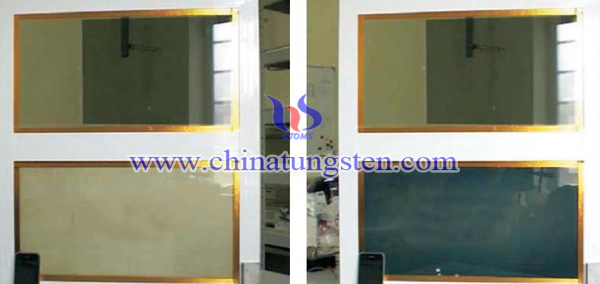Low Temperature Heat Treatment of Tungsten Trioxide Electrochromic Film
- Details
- Category: Tungsten Information
- Published on Thursday, 07 July 2016 18:26
Electrochromic thin film materials include various of organic and inorganic compounds, wherein the tungsten trioxide is the typical inorganic electrochromic material, and also get the largest research; its main preparation methods are vacuum thermal evaporation, electron-beam evaporation, sputtering, vapor deposition, electro-deposition and sol - gel method ect.. Electrochromic material refers to the optical properties (reflectance, transmittance, absorption rate, etc.), the stable and reversible color change is occurred under the applied electric field, which shows a reversible change in color and transparency in the appearance.

The adhesion and cycle service life of electrochromic film will be improved through a heat treatment under the suitable temperature, such as electron-beam evaporation method requires 500°C, hot steam method requires 350°C, a sputtering method requires 200~300°C and so on; however, the high-temperature heat treatment tends to affect the response time and discolored extent of the film. For this case, a research on the low temperature heat treatment technology of tungsten trioxide electrochromic film can better enhance the properties of the film.
Studies have shown that, the raw material of sodium tungstate by sol-gel method and then through ion exchange method to obtain tungstic acid solution, in addition, the ethanol and polyvinyl alcohol (PVA) and other additives are followed added, to prepare a tungsten trioxide electrochromic film with superior property. This film is colorless and transparent, and turns to blue uniformly after it energized. Studies have shown that the film requires only a low heat treatment temperature of 75°C, and ultra low drive voltage (-1 ~ + 1V), and moreover, a few seconds are required to take both the fully colored and fade time. In addition, the test results showed that, the color of film changed significantly after power up, and with a good controllability; the film is still remaining in a stable state after the continuous coloring - bleaching processes in an aqueous solution, which has shown its superior performance.
| Tungsten Oxide Supplier: Chinatungsten Online www.tungsten-oxide.com | Tel.: 86 592 5129696; Fax: 86 592 5129797;Email:sales@chinatungsten.com |
| Tungsten News & Prices, 3G Version: http://3g.chinatungsten.com | Molybdenum News & Molybdenum Price: http://news.molybdenum.com.cn |



 sales@chinatungsten.com
sales@chinatungsten.com